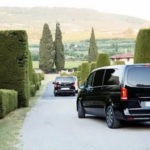Hyperpressed brick today is becoming the best material for facing. Therefore, you should find out more about him.
Story
This material appeared a long time ago, back in the era of the development of the Roman Empire, and maybe much earlier. It was very convenient for ancient people to build homes not of stone, but from brick, which had the correct shape and preserved the heat better. In addition, production was already easier then than the production of stone: they just knew a solution of the necessary composition and consistency, poured into forms and burned in the furnace.
First, brick was made full -bodied, from a mixture of clay and straw by firing. In this way, the so -called saman. Later they simply began to burn a solution of clay in special forms. So the red ceramic brick turned out. Since the Middle Ages, it has become the main material for the construction of houses.
The last to appear was white silicate brick. Clay was not added to it, but a product was formed from a solution of lime. Now a solution of concrete can be used as a material for brick, sometimes with a variety of additives.
The shape of the brick is the same, but the dimensions and weight – differ. Today there is a tendency to make it with holes throughout the thickness. This technology reduces the consumption of the material for the product and its weight, at the same time, thermal insulation characteristics remain unchanged. And with the help of various additives, you can increase the frost resistance and strength of the product.
It is believed that facing brick appeared abroad, where there was a need to give buildings aesthetic species. Initially, these were hollow objects of burned clay. The form could be different: rectangular, round, trapezoidal. Naturally, the color was characteristic of ceramics: from brown to brown.
Later, concrete and silicate solutions began to be used as a material for facing bricks. Products were colorful with the following methods:
coating of the product with colored enamel;
the introduction of a necessary shade into a solution;
finishing the outer part of the brick with a pigment of the required color.
Today, the types of finishing bricks are diverse: it can be diverse, color, texture of the outside can be decorated under another material, for example, stone. The general qualities for him, both in antiquity and now, are high strength, resistance to the exposure of the sun, low temperatures and high humidity. This is a great material for warming the house.
Recently, the so -called hyperpressed brick has appeared on the market. What is it?
Hyperpressed brick is a material made in a semi -dry way using a special technology. The technology of its production was developed in Europe as part of the search for cheaper and optimal materials for construction.
In Europe, this is an affordable building material that is not inferior in its properties to ordinary bricks and other facing materials. In Russia, not many are produced by hyperpressed products. One of these companies that has achieved significant success in this area of production – Rubeleko LLC, the plant produces hyperpressed facing brick and facade tiles in 6 color versions. In addition, as mentioned above, this is non -waste production, since it is usually used for manufacturing waste from stone.
Production technology
Hyperpressed brick using production technology resembles silicate. However, there are several very important differences.
Very little water is added to the solution for production (the humidity of the mixture is up to 10%). Such a mixture is called semi -dry.
The filler occupies a significant volumetric part of the solution. Usually these are a variety of types of stone, but there may also be production waste. Any stone material of various shapes and sizes is suitable.
During the manufacture process, pressure is used.
That is, for the production of hyper-pressed bricks, a solution based on stone waste is mixed, a small part of water and a pigment of the required color are added there. The mixture is poured into the form and is exposed to high pressure (hundreds of atmospheres). After the primary pressing, the product is left for a set of strength. In order for the brick to get the required value of strength, 28 days should pass. For accelerated production at the stage of pressing, the products are additionally processed with wet steam.
Hyperpressed brick characteristics:
almost perfect form without external defects;
high structural density (it is heavier than the solution);
strength in the interval of 150-450;
high frost resistance;
2 output options: full -bodied and hollow;
A variety of variations of the form of brick. Usually it is a standard rectangular, but it can be any;
Absolutely smooth and flat external surface;
the possibility of design “under stone” due to special processing of the external surface.







